Martha’s Vineyard, the largest island off the coast of Massachusetts, might conjure up images of pastel-clad bluebloods sipping bourbon and smoking cigars on multi-million-dollar sailboats, but this island is much more than a playground for the East Coast elite. For nature lovers, the Vineyard is blessed with some of New England’s most well-preserved forests, lagoons, and beaches — in fact, about 40 percent of the island is protected open space. The history and culture of the island’s townships are equally compelling draws: Edgartown’s opulent architecture from its heyday as a whaling capital, a time and place immortalized in Melville’s Moby Dick; Oak Bluffs’ special place in African-American history as one of the first tourist destinations to welcome Black vacationers; and Aquinnah as the ancestral home of the Indigenous Wampanoag people. The following four-day itinerary shows you how to enjoy the delights of this special island without the need to liquidate your 401(k).
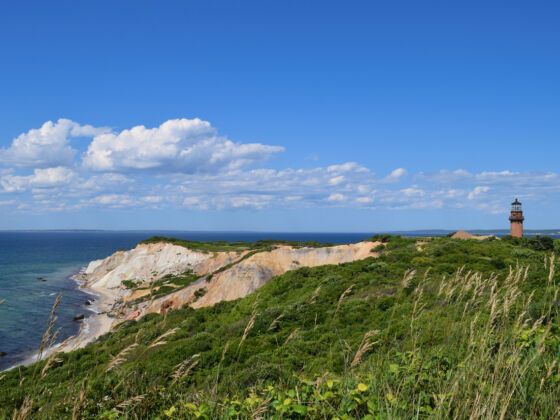

How to Plan a Cheap, Last-Minute Vacation to Martha’s Vineyard
How to get to Martha’s Vineyard
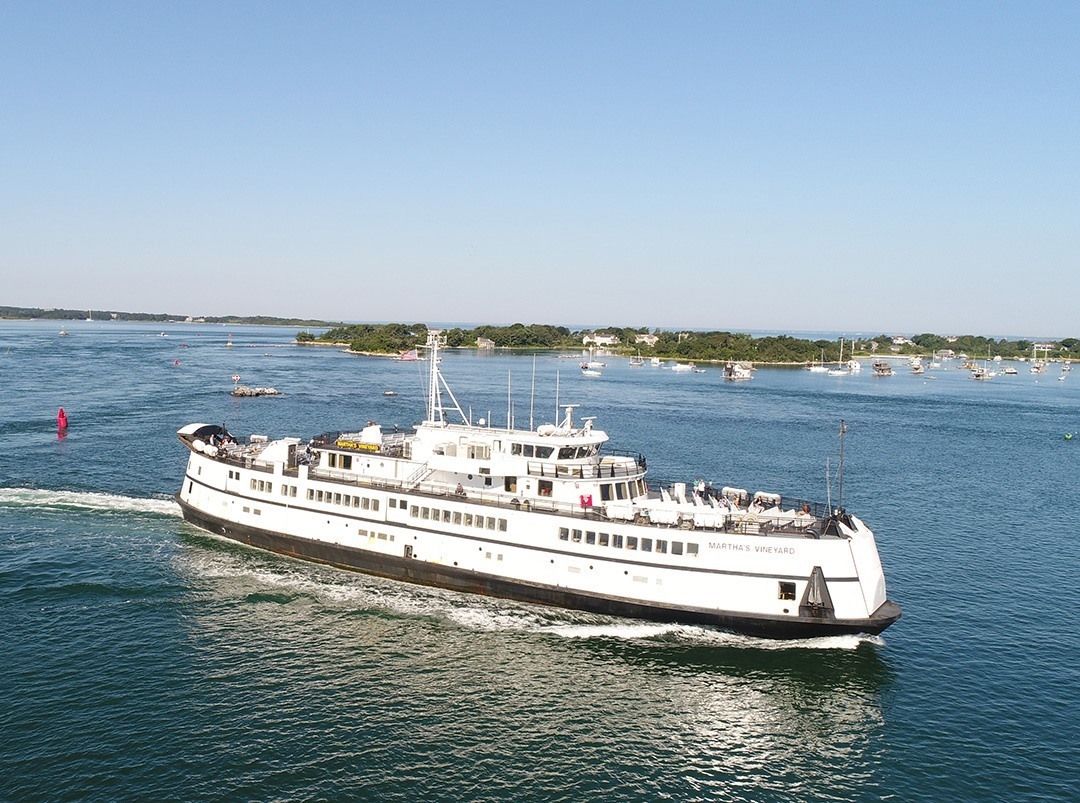
Photo: Steamship Authority/Facebook
The most popular way to get to the Vineyard is via the Steamship Authority ($19 roundtrip), a ferry from Woods Hole, MA, a town on Cape Cod about 30 minutes by car from Boston. You can either park your car in one of the long-term lots in Woods Hole (about $15 per day during the summer) or drive it onto the Steamship Authority. (Note: the cost to take a car onboard varies depending on size, but most vehicles cost about $100 to ferry. Make sure to make vehicle reservations as far in advance as possible, especially during the busy summer months.) No car? No problem. Buses to Woods Hole depart daily from Boston’s South Station. Alternatively, you can catch a ferry from the town of Hyannis on Cape Cod ($63 roundtrip) or even from New York City ($240 roundtrip). The Vineyard has a small airport, and Cape Air flies to the island from most cities in the Northeast.
Lodging

Photo: Isabelle’s Beach House/Facebook
If you are looking to keep your budget in check, Vineyard Harbor Motel ($185 per night), located right by the Steamship Authority ferry terminal, and Isabelle’s Beach House ($210 per night), right in Oak Bluffs, are among the Island’s most affordable lodgings. Even better, both are located about equidistant to Edgartown and the Vineyard’s western coast. Martha’s Vineyard Family Campground ($60 per night), near Vineyard Haven, overlooks the water and is a terrific option if you plan to stay in a tent or RV. Public buses to all corners of the island are easily accessible from all aforementioned lodgings. Additionally, the island has several affordable Airbnbs and bed-and-breakfasts. This cottage in Oak Bluffs ($200 per night) and this apartment in Tisbury ($250 per night) are centrally located and rank high in reviews. For the extreme budget traveler, there’s an active community of Couchsurfing hosts on the Vineyard.
Getting around the island
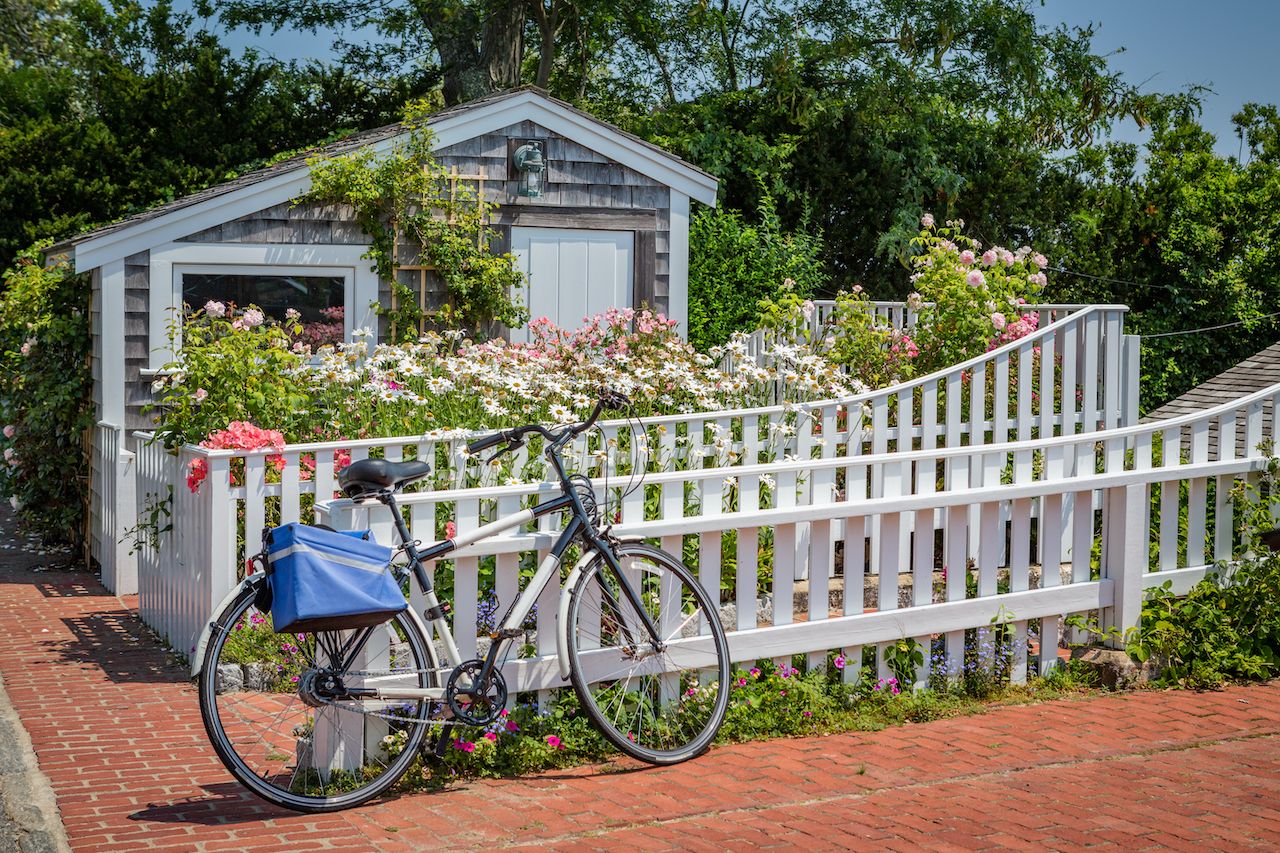
Photo: jo Crebbin/Shutterstock
The easiest way to explore Martha’s Vineyard is by car. If you don’t take your vehicle on the Steamship Authority, there are car rentals agencies at Martha’s Vineyard Airport and in Edgartown, Oak Bluffs, and Vineyard Haven. Bike rentals are available all over the island, too, and the rides are gorgeous. Keep in mind that if traversing the island by bike, the distances can get long (two to three-hour rides). Even without a car or a bike, getting around the Vineyard by bus is a breeze. Simply purchase day passes for the Vineyard Transit Authority at the Steamship Authority terminal, the same place where you disembark from the ferry. One-day or multi-day passes are available for about $8 per day.
Day one: Edgartown
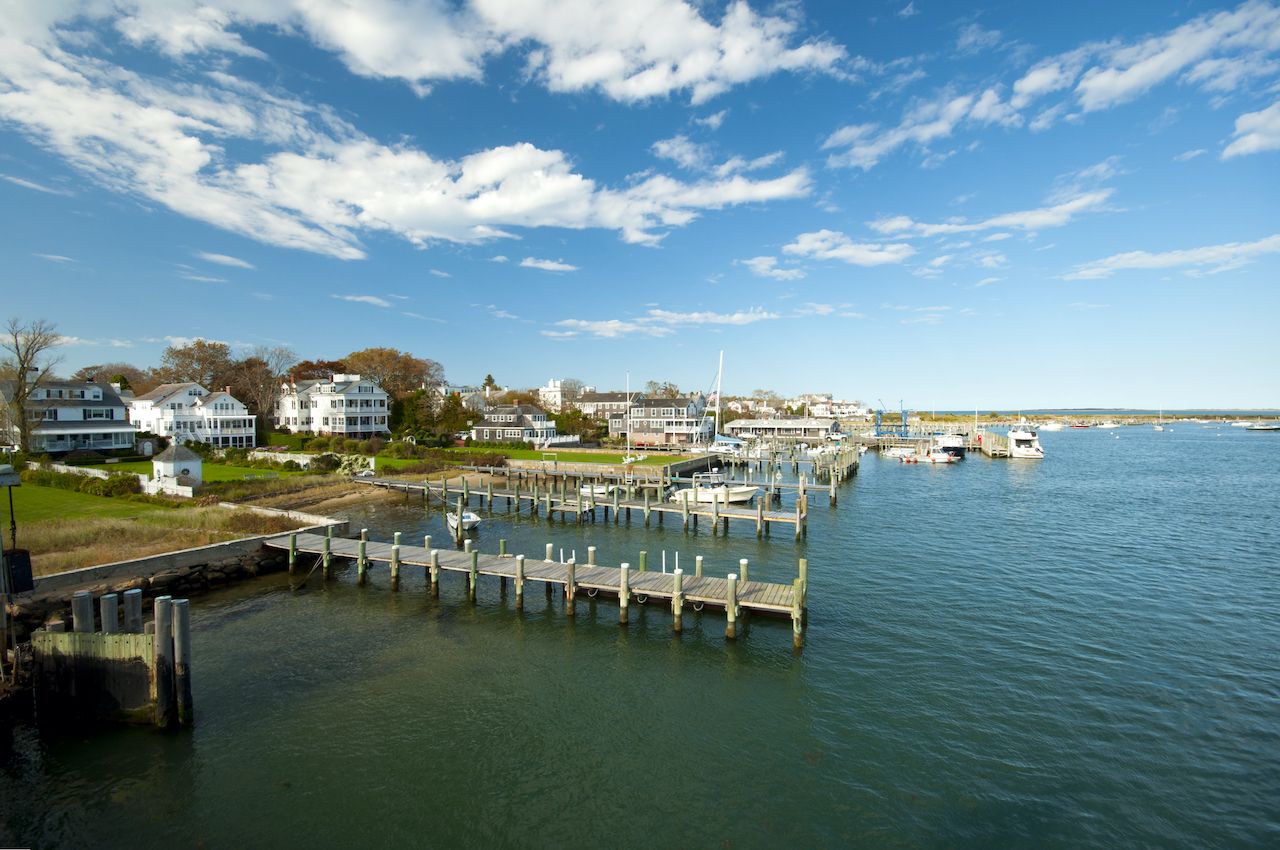
Photo: AR Pictures/Shutterstock
Edgartown, with its elegant clapboard houses and streets festooned with pink and blue hydrangeas, is one of the most beautiful towns in New England. Like the Plymouth Bay Colony, Edgartown was founded in the 17th century by English Puritans fleeing what they saw as the irredeemable moral and spiritual decay of Europe. The town grew wealthy and prosperous as a whaling hub in the 19th century, and nostalgic signs of its glorious past remain today. Many of the old houses in Edgartown have small, rooftop decks — known as widow’s watches — where the wives of whaling captains could watch the sea in the hopes that they might spy their beloved’s ship returning on the horizon.
Start the day in Edgartown with a perfectly crafted cup of joe at Behind the Bookstore off Main Street. The shady back patio, gently buzzing with conversation and the whir of espresso machines, is the ideal spot to linger with a good read from the eponymous bookstore. Edgartown is small enough to fully cover on foot, but with its many art galleries, funky shops, bakeries, and ice cream parlors, we recommend setting aside about three hours to explore.
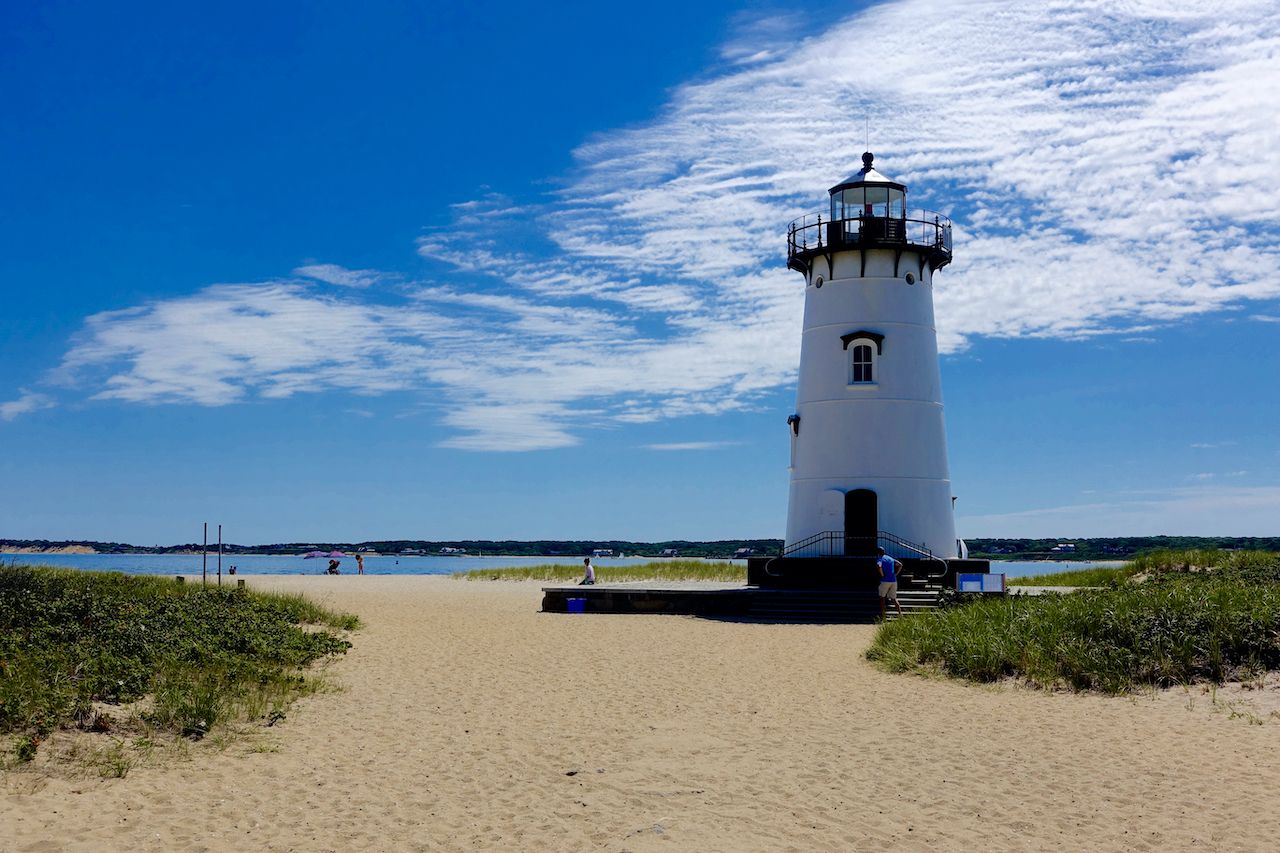
Photo: Gary Alford/Shutterstock
To see Edgartown’s most beautiful houses and gardens, stroll up Water Street to Lighthouse Beach. Lighthouse Beach, inside Edgartown Harbor, is placid and scenic, but for a more exhilarating beach experience, head to Katama, about one mile outside of Edgartown on the Island’s south coast. Katama is usually packed during the summer months, and the waves here are notoriously large and powerful. If you have a Jeep or other off-road vehicle, take some air out of your tires, and join the scores of tailgating revelers at Katama’s Norton Point.
For an affordable but delicious meal of deep-fried seafood, look no further than the Quarterdeck, a dining counter right by Edgartown Harbor. Forget ketchup or tartar sauce for your fish-n-chips or fried clams; instead, do as the locals do and use malt vinegar for dunking. Dock Street Diner, a greasy spoon serving classic New England breakfasts like linguica omelets and corn beef hash, opens at 6:30 AM to nourish both outgoing fisherman and wobbly revelers returning from beach parties. Atria, an acclaimed Modern American restaurant on the island, is a gourmet tour de force of the bounty of the Vineyard’s land and waters. The main dining requires a reservation and makes for an expensive night, but Atria’s subterranean pub offers gourmet burgers and craft beer at reasonable prices.
Day two: Chappaquiddick

Photo: Raymond Douglas Ewing/Shutterstock
An island off an island, Chappaquiddick, affectionately dubbed Chappy, is just a short ride from Edgartown on the On-Time Ferry at Edgartown Harbor. Ferries depart every 15 minutes or so, and round-trip tickets are $4 for passengers without vehicles, $13 for cars and drivers, and $6 for bikes and riders. Since there are no buses on Chappy, we recommend renting a bike if you don’t have a car. Hitchhiking on Chappy is also common.
Unlike Edgartown, Chappy has little development. Most of Chappaquiddick’s land is protected under conservation laws, and the island is largely blanketed by forest. There is only one business on Chappy, a general store selling mostly fishing gear, and not a single traffic light appears anywhere on the small island. Mytoi, a traditional Zen garden deep in the heart of the island and open to the public, is a great hidden spot on Chappy.
Chappy’s best beaches require effort to reach, but intrepid visitors are rewarded with a seashore devoid of the crowds and congestion of Katama and other popular beaches near Edgartown. If you plan to spend the day on Chappy, it’s wise to bring snacks or a picnic basket, as the nearest restaurants are on the other side of the ferry in Edgartown. We recommend grabbing some wrapped sandwiches and cold drinks at Rosewater Market in Edgartown to bring over to Chappy.
After you work on your tan on a secluded Chappy beach, head back to Edgartown for a nocturnal bar crawl. Edgartown punches above its weight for nightlife during the summer months, and the section of Main Street by the harbor gets particularly rowdy after dark. The Atlantic, located right on the water, has great food, live music, and strong cocktails. To throw back a few pints in a well-worn dive bar among a mix of locals and tourists, check out The Wharf. Head to the Seafood Shanty for a younger atmosphere, riotous patio bar, and killer views of the harbor.
Day three: Oak Bluffs
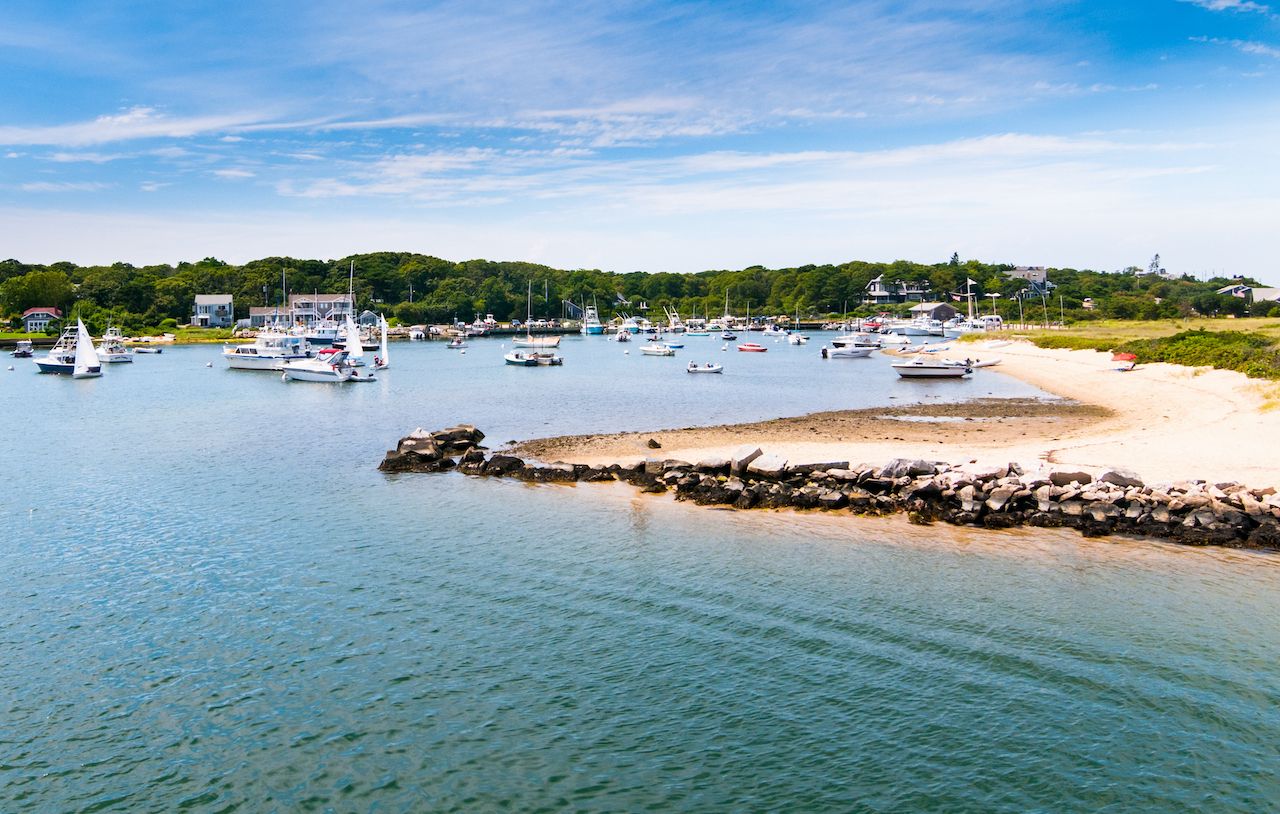
Photo: Patrick F Infante/Shutterstock
Driving west from Edgartown along the shore, you reach Oak Bluffs in about 20 minutes. If Edgartown embodies the New England ideal of reserved opulence and understatement, Oak Bluffs, with its candy-colored gingerbread cottages, bustling game rooms, and lively streets, throws restraint to the wind.
Founded as a religious meeting ground and retreat in the late-19th century, Oak Bluffs was one of the only destinations on the East Coast to welcome African American vacationers before the end of segregation.
Start your exploration of Oak Bluffs at Ocean Park, the gazebo-adorned park in between the beach and the center of town. Oak Bluffs’ most iconic gingerbread houses — cozy, candy-colored Victorian cottages embellished with doily-like woodwork — dot the perimeter of Ocean Park. Walking tours of the gingerbread houses take you through Oak’s Bluffs’ shady streets, and occasionally the houses open to allow visitors to see the interiors as well.
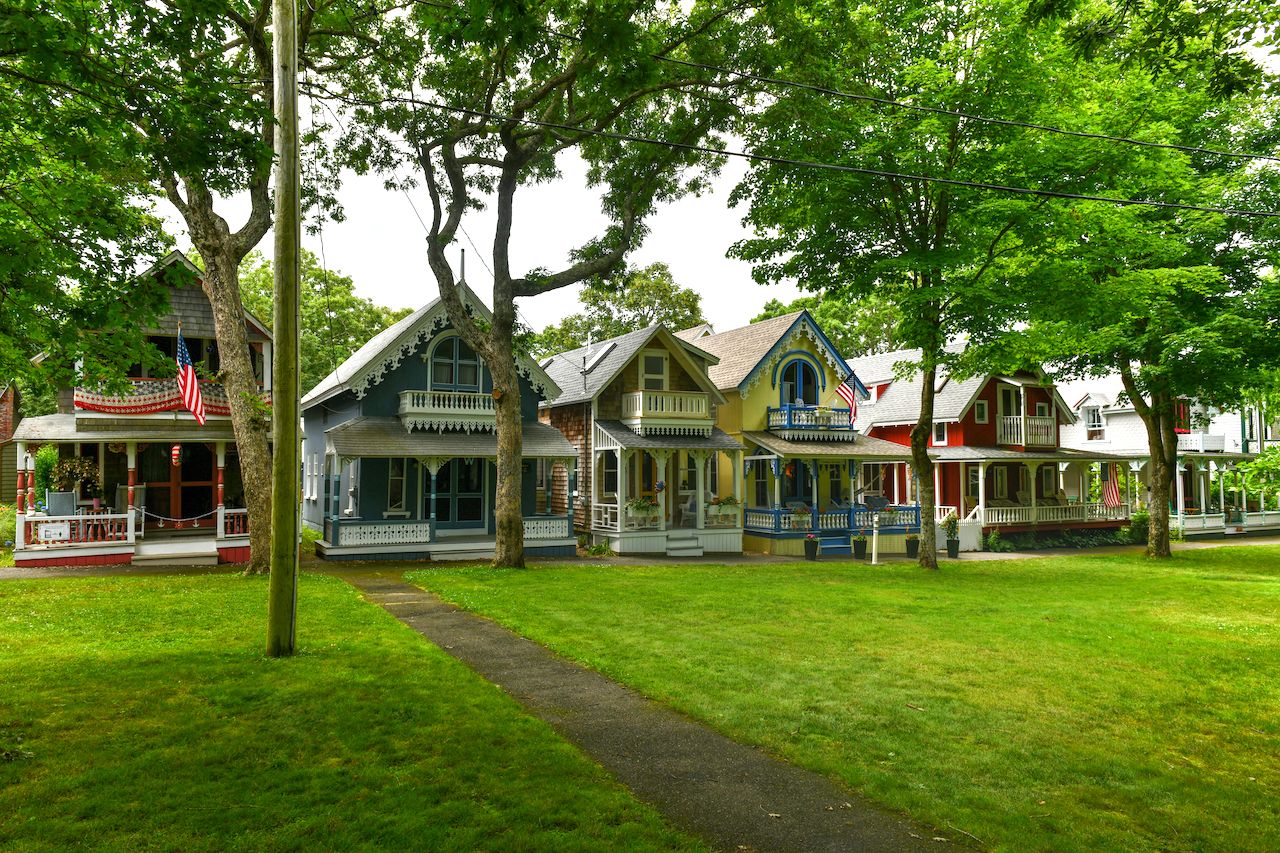
Photo: Felix Lipov/Shutterstock
Circuit Avenue, the central street lined with bars, restaurants, and candy shops, is the beating heart of Oak Bluffs. The Flying Horses Carousel is one of the oldest functioning carousels in the US and a glorious example of Americana. Rides are only $3.50, and adults and children alike are welcome to take a spin. After dark, Circuit Avenue is the place to let go, with tourists and locals patronizing the slew of bars and live music venues. For a bumping bar scene and fun live music, you can’t go wrong at either Sharky’s Cantina and The Ritz Cafe on Circuit Avenue or Coop de Ville Restaurant located on the waterfront.
Oak Bluffs holds its own in terms of fine dining with establishments like Red Cat and the Sweet Life Cafe, but locally beloved no-frills eateries like Fat Ronnie’s Burgers or Stella Salumeria allow you to eat like a king without shelling out royal bucks. Head to Offshore Ale Company to sample some locally crafted nectar. If you have a sweet tooth, make sure not to leave Oak Bluffs without a cone of the decadently rich ice cream from Mad Martha’s, a cherished Vineyard institution. Order the aptly named Sinful Chocolate.
Day four: Tisbury and Aquinnah
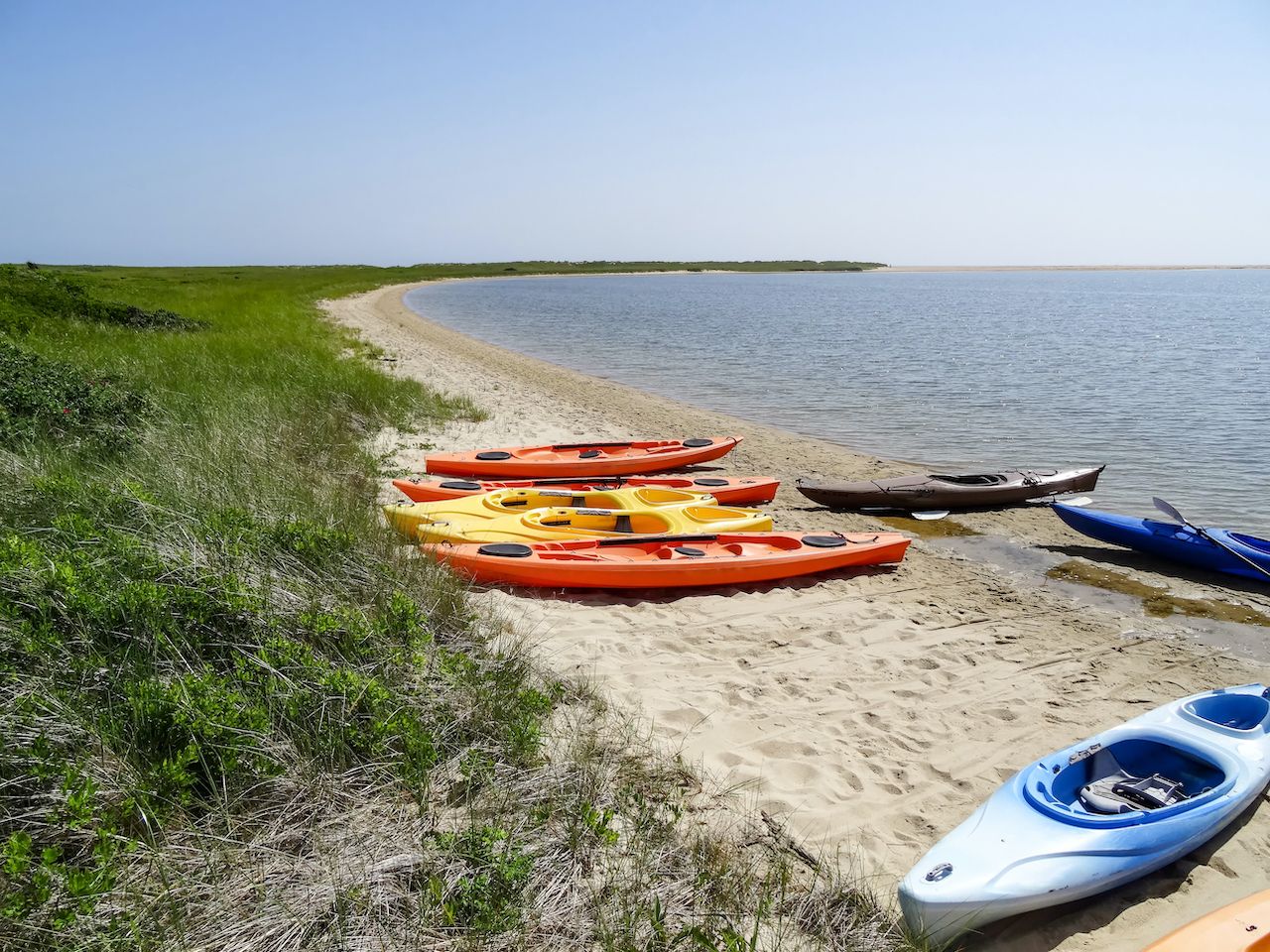
Photo: Wandel Guides/Shutterstock
The Vineyard’s western reaches are referred to as “up-island,” a region of small farms, sleepy villages (even in the summer months), and commercial fishing. Menemsha, Aquinnah, and Chilmark are the principal up-island towns, small communities with little more than a post office, general store, and gas station. In dramatic contrast to Edgartown and Oak Bluffs, the rhythm of life changes little between the summer and the off-season in these towns; businesses here stay open all year round, and the vibe is more local than touristy.
The up-island Tisbury Farmers Market, active on Saturdays, showcases the island’s cornucopia of fruits and vegetables, cheeses, honey, mushrooms, locally raised meat, and more. The Tisbury Farmers Market is also one of the best places to sample prepared food from some of the island’s most creative cooks operating out of food stalls.
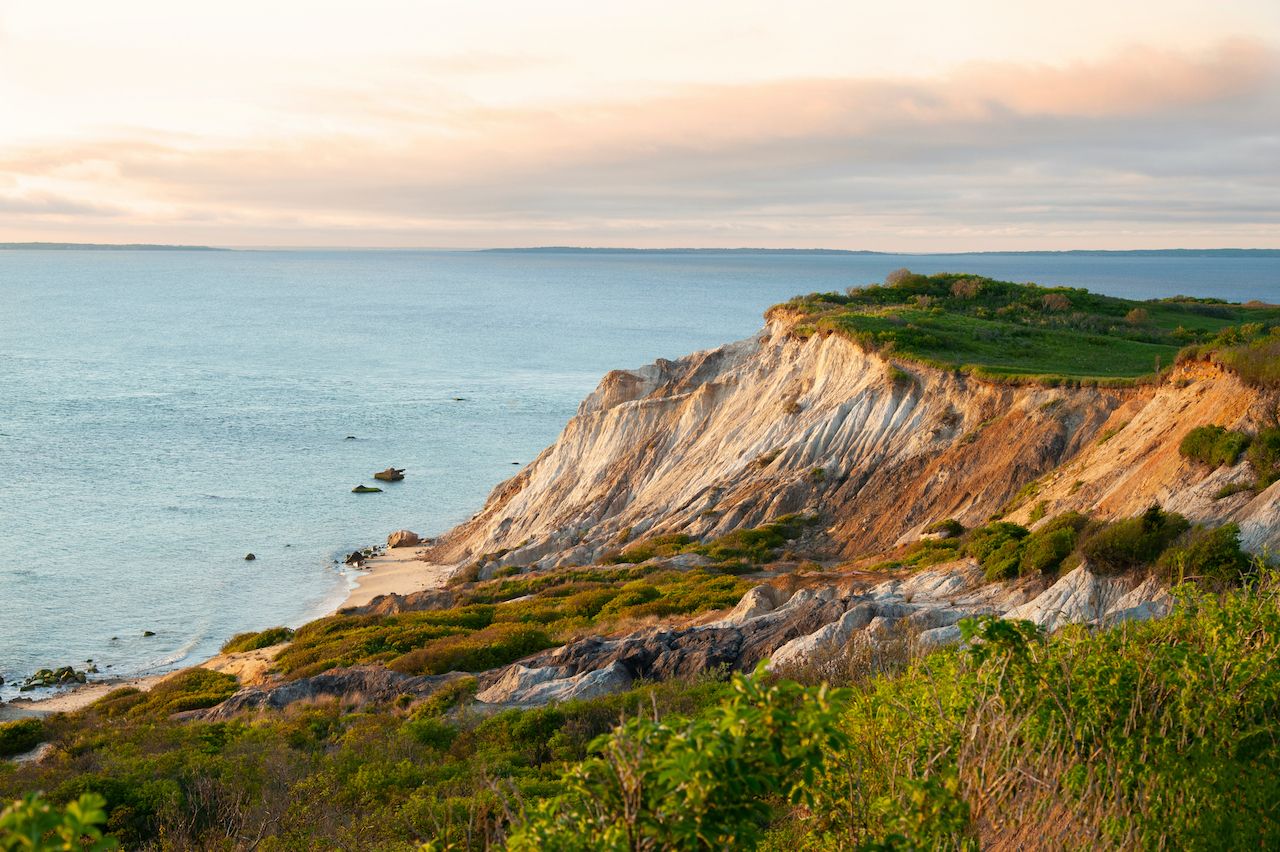
Photo: Allan Wood Photography/Shutterstock
A strong case can be made that Aquinnah, Martha’s Vineyard’s western peninsula, has the most beautiful beaches on the entire island. With red clay cliffs tracing a wide stretch of sand for miles and rolling waves as clear as glass, Aquinnah is nothing short of spectacular. Much of the land in Aquinnah, including the beaches, belongs to Wampanoag Nation (they request that visitors enjoy the beach without removing clay from their cliffs).
Since accessing the beach requires a decent walk, we recommend bringing a picnic basket if you plan to spend the day here. You can procure sandwiches and prepared food from the Aquinnah Shop, next to the town’s iconic red-brick lighthouse. A warning before hiking down to the beach: a certain stretch is designated as clothing-optional, and many beachgoers do, in fact, take advantage of the opportunity to get a more complete tan.
After a day enjoying the sunshine of Aquinnah, make the short drive up to the fishing town of Menemsha for dinner. The street leading to Menemsha’s harbor is lined with fish markets selling oysters, clam chowder, lobster rolls, and seafood specialties with a Portuguese flair, a nod to the large number of fishermen claiming Azorean descent. A hearty meal of chowder, bread, and fruits of the sea will probably not run you more than $30, unless you order a whole steamed lobster. Grab a paper plate of absurdly fresh oysters, garnished with horseradish and marinara sauce, a bowl of rich clam chowder, and an overstuffed lobster roll from Larson’s Fish Market. There are no tables per se, but the wooden crates behind the market work just fine for dining. Better yet, walk the short distance to the pier and enjoy your meal while watching the sun slowly drop into the Atlantic.
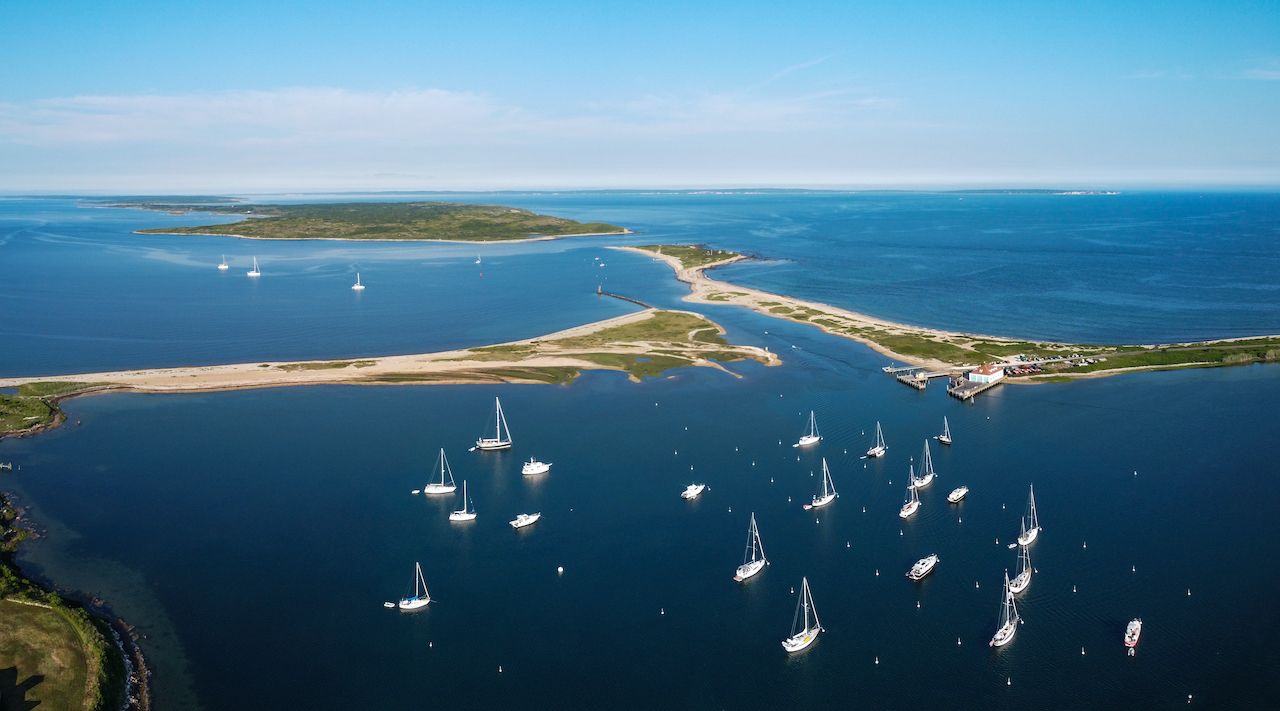
Photo: CJ Larsen/Shutterstock
If you stick around Menemsha long enough, you might even find someone with a boat who is willing to ferry you over to Cuttyhunk, the western-most outpost on the barely-inhabited Elizabeth Islands. Cuttyhunk’s population is officially only 52 souls, nonetheless, there are places of lodging, a restaurant or two, and quiet beaches on the island worth exploring.